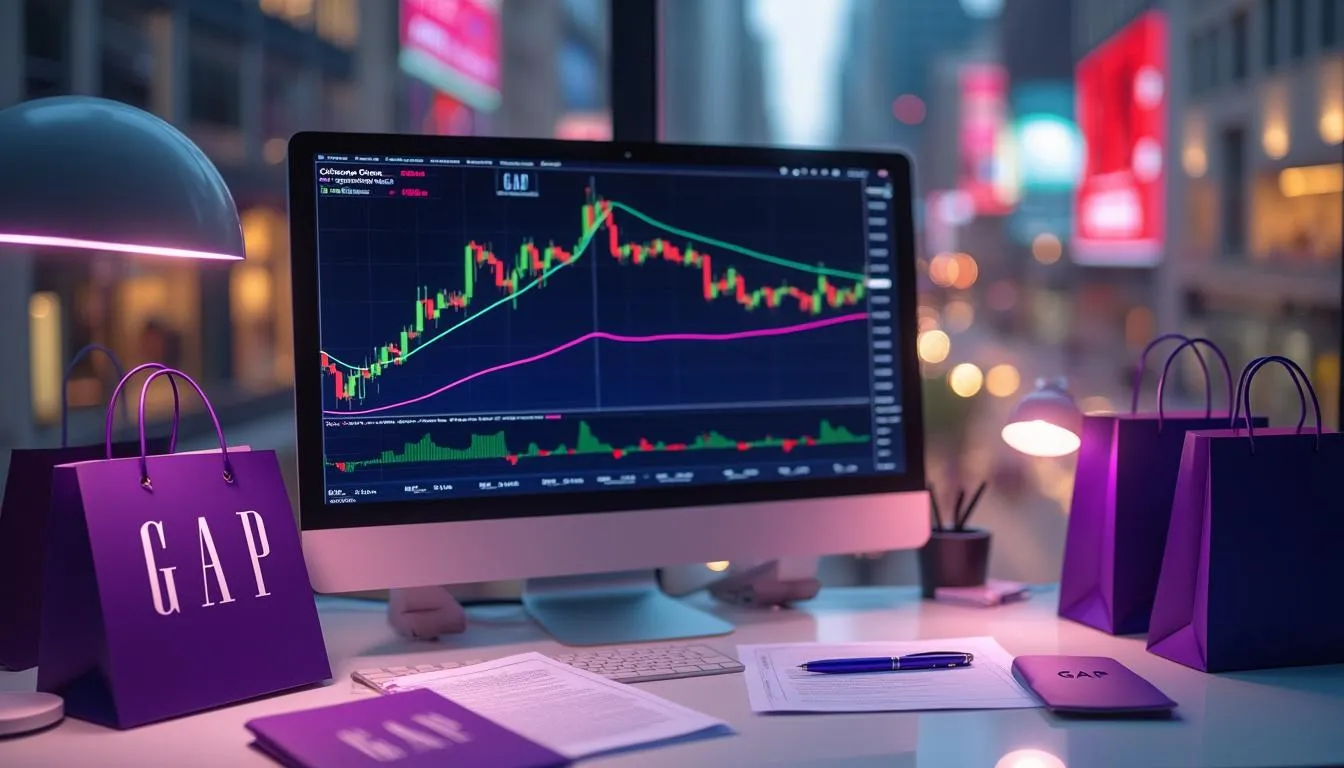JP Morgan’s Unexpected Downgrade Sends Ripples Through the Defensive Food Giant
General Mills (GIS), a stalwart in the global packaged foods sector and home to iconic brands such as Cheerios, Betty Crocker, and Blue Buffalo, has long been regarded as a defensive play for income-oriented investors. However, today’s decisive downgrade by JP Morgan from "Neutral" to "Underweight," accompanied by a new $45 price target, has brought the company—and the broader packaged foods sector—under renewed scrutiny. This shift in analyst sentiment is particularly notable given General Mills’ reputation for steady dividends and resilient cash flows, especially during turbulent markets.
JP Morgan’s move is significant because analyst downgrades from high-profile investment banks often catalyze reassessment of risk and reward in blue-chip portfolios. With the new price target implying meaningful downside from current levels, investors must now weigh the risks of further price erosion against the traditionally defensive characteristics that have made General Mills a staple in many portfolios. Why does this matter? Because analyst ratings from institutions like JP Morgan frequently serve as a leading indicator for institutional flows and sector rotation, especially when macroeconomic headwinds intensify.
Key Takeaways
Potential Downside Risk: JP Morgan’s $45 price target implies a downside of approximately 9% from the current price of $49.45.
Stock Price Weakness: GIS is hovering near its one-year lows (recent low: $48.59), reflecting persistent selling pressure in the sector.
Mixed News Sentiment: Recent news includes both strong mentions as a “safer” dividend dog and a high-profile “Bear of the Day” label, highlighting conflicting market narratives.
Volume and Volatility: GIS has seen subdued volumes and below-average sentiment, with more down days than up days over the past year, suggesting limited technical support.
Sector Conference Ahead: Company executives will present at the Barclays Global Consumer Staples Conference, which may offer new strategic insights or catalyze sentiment shifts.
JP Morgan’s Downgrade: Context and Consequence
Why JP Morgan’s Call Matters
JP Morgan is one of the globe’s largest and most influential investment banks, with deep sector expertise and a robust track record in consumer staples coverage. Their analyst team is known for their rigorous, data-driven approach, and their ratings often influence institutional fund flows. The move from "Neutral" to "Underweight" signals a shift from cautious optimism to a clear expectation of underperformance relative to peers—particularly meaningful for a stock as widely held as General Mills. The new $45 price target represents a marked reduction in confidence and an explicit warning that the risk/reward balance has tipped toward the downside.
Analyst confidence is notable: JP Morgan’s sector leadership adds weight, aligning with GIS’s muted price trend and mixed news backdrop.
How Does This Downgrade Fit with Recent Performance?
General Mills has delivered a string of consistent, if unspectacular, quarters—hallmarks of a consumer staple. However, the stock has trended downwards, recently setting a new 52-week low. This technical weakness is now being echoed by JP Morgan’s more bearish fundamental stance, suggesting the market’s skepticism is not just technical but rooted in underlying business challenges and sector headwinds.
Stock and Financial Performance: Defensive, But Is It Enough?
One Year of Price Action: A Defensive Stock Under Pressure
Current Price: $49.45
One-Year High: $75.90 (Sept 10, 2024)
One-Year Low: $48.59 (July 31, 2025)
Recent VWAP: $59.56 (shows a steady decline in average value)
20-Day EMA: $49.81 (close tracking to current price, confirming a flat/down trend)
RSI: 55.58 (neutral, but not oversold)
Average Daily Volatility: 1.20% (relatively low, consistent with staple sector peers)
Sentiment Ratio: Just 46.9% of days have been up days in the past year (underwhelming for a defensive name)
The numbers paint a clear picture: GIS has steadily lost ground, with persistent outflows and muted investor enthusiasm. The 20-day EMA and VWAP are both tracking below the 12-month average, indicating that the technical trend is firmly bearish. Recent volume has also been subdued, with the lowest daily volume for the year occurring in the latest session, a possible sign of investor fatigue or apathy.
Financial Profile: Resilient, But Growth Concerns Mount
General Mills’ appeal has always been its stability. The company generates robust free cash flow, supports a healthy dividend yield, and boasts a broad, diversified portfolio across cereals, snacks, and pet foods. However, the broader sector faces margin pressures from input cost inflation, shifting consumer preferences, and private label encroachment. GIS has responded with selective price increases, targeted innovation (especially in pet and health-oriented categories), and ongoing cost control. Yet, these measures may be insufficient to offset sector-wide headwinds, especially as volume growth stagnates.
Potential Downside: What Does JP Morgan’s Target Signal?
With GIS trading at $49.45 and JP Morgan’s new target set at $45, the implied downside is approximately 9%. For a defensive, dividend-paying stock, this is a notable risk—especially when compared to the historical sector average for drawdowns during macro stress periods. Investors seeking safety in staples may need to reassess allocation sizes or consider hedging strategies, as further downside could erode both capital and confidence.
Downside Calculation:
Current Price: $49.45
Target Price: $45
Implied Downside: ~9%
While GIS’s dividend yield may cushion some of the blow, the combination of technical weakness, sector challenges, and one of Wall Street’s most influential banks turning negative all point to a period of heightened risk.
Recent News Flow: Contradictory Narratives
Dividend Strength vs. Bearish Sentiment
Recent media coverage underscores the market’s divided view on General Mills:
Seeking Alpha (Aug 19, 2025): GIS is cited as one of the “safer” dividend dogs, with analyst targets projecting 20–45% net gains for top ESG dividend stocks by August 2026. The report highlights General Mills’ sustainability and reliable income stream, appealing for long-term, risk-averse investors (read more).
Business Wire (Aug 19, 2025): Announcement of a high-profile appearance at the Barclays Global Consumer Staples Conference, where CFO Kofi Bruce and Group President Dana McNabb will discuss strategy. This event could offer new guidance or signal management’s response to recent challenges (read more).
Zacks Investment Research (Aug 19, 2025): GIS is named “Bear of the Day,” with Zacks warning of deteriorating technicals and fundamental headwinds (read more).
“General Mills has shown resilience in previous downturns, but the current environment is more challenging given food inflation and shifting buyer preferences.” – Zacks Investment Research (Aug 19, 2025)
What’s Next: Key Catalysts and Investor Considerations
Barclays Conference: Turning Point or More of the Same?
The upcoming Barclays Global Consumer Staples Conference could provide critical insights into management’s forward strategy. Investors should listen for:
Commentary on input cost management and margin outlook
Plans for innovation and portfolio rationalization
Updated guidance on volume trends, especially in core U.S. and pet segments
Dividend Safety: Still a Buffer?
General Mills’ dividend remains a core attraction. However, if margin compression persists or top-line growth slows further, the sustainability of payout growth could come into question. Recent Seeking Alpha analysis suggests GIS’s dividend is among the more reliable in the sector, but investors should monitor payout ratios and free cash trends closely.
Strategic Takeaways for Investors
Reassess Defensive Allocations: GIS’s traditional safety is challenged by both sector headwinds and a powerful analyst downgrade.
Monitor Technical Levels: Watch for a break below $48.59 (recent 52-week low) as a potential stop-loss trigger or signal for further downside.
Track News Flow: Conflicting analyst and media narratives signal heightened volatility ahead; upcoming management commentary will be crucial.
Dividend Remains a Draw: For yield-focused investors, GIS may still offer value, but the risk of further price depreciation should be weighed against income needs.
Conclusion: Defensive, But Not Immune
JP Morgan’s downgrade of General Mills to "Underweight" with a $45 price target is a shot across the bow for investors who view consumer staples as a safe harbor. While GIS’s fundamentals remain sound, the combination of technical weakness, sector challenges, and a loss of confidence from a top-tier analyst calls for caution. Investors should closely monitor the upcoming Barclays conference for new guidance and reassess their risk exposure in the context of this new reality. In the meantime, GIS remains a classic example of how defensive stocks are not always immune to downgrades or downside—especially when sector dynamics change.

.svg)
.svg)
.svg)
.svg)

.svg)

.svg)
















